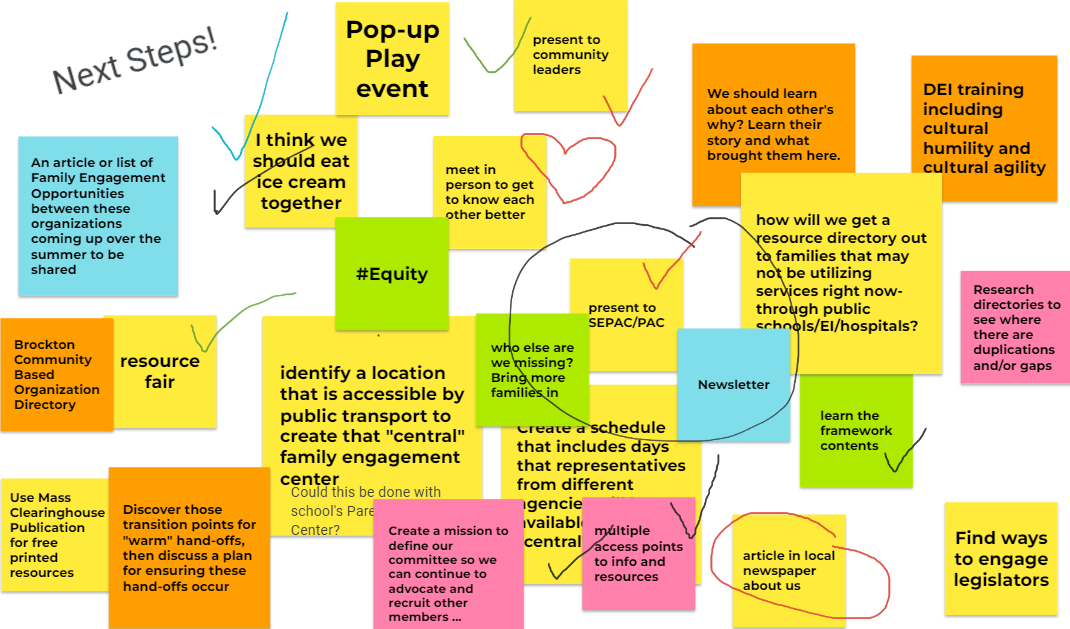At FCSN and MASFEC, we use a co-design process whenever possible. We bring families, educators, and other stakeholders together to partner with us in designing, implementing and evaluating new initiatives. We also facilitate co-design sessions for other organizations and school districts. Using co-design helps us include diverse perspectives, create user-centered trainings and programming that resonate with the intended audience, and
develop a sense of ownership and investment in the final outcome in our communities.

Screenshot from a co-design session led by FCSN staff
Co-design is a process and a mindset that shapes how we approach collaboration and decision-making. It requires a shift from traditional hierarchical structures to shared power and equal participation. By prioritizing relationships and fostering trust, co-design builds a foundation for open and honest communication among stakeholders.
Moving from viewing stakeholders as mere participants to active partners is a fundamental aspect of co-design. This mindset acknowledges that stakeholders bring valuable expertise and insights that should be considered throughout the entire process. Their contributions are not limited to providing suggestions but also include actively participating in decision-making processes.
Co-design also seeks to build the capacity of stakeholders, allowing them to develop skills, knowledge, and confidence in contributing to the design process. By nurturing their abilities, organizations enable stakeholders to take ownership of the trainings and programming and become advocates for their success.
Co-design challenges the traditional approach of designing for stakeholders by emphasizing the importance of designing with them. It acknowledges that stakeholders are experts in their own contexts, and their involvement is essential for developing solutions that truly meet their needs. By co-designing, groups can tap into stakeholders’ wisdom and lived experiences, leading to more relevant and impactful outcomes.

Notes on the whiteboard from a co-design session in a MA school district
In a co-design process, stakeholders are not merely consulted for their input or suggestions. Instead, they are active partners who have decision-making authority. Their perspectives and opinions carry weight and influence the direction of the trainings and programming. This approach recognizes that stakeholders have valuable knowledge and insights that can contribute to making informed decisions.
By embracing these principles and adopting a co-design approach, organizations can foster genuine collaboration, enhance stakeholder engagement, and ultimately develop trainings and programming that are more effective, inclusive, and aligned with the needs of all stakeholders involved.
Co-design goes beyond a conventional design process. It embodies a mindset of shared power, relationship prioritization, and active partnership. By embracing this approach, organizations can tap into the diverse expertise of stakeholders, building capacity and empowering them as active contributors. Designing with stakeholders, rather than for them, allows for more meaningful and impactful outcomes. When stakeholders are given decision-making authority, it fosters a sense of ownership, accountability, and buy-in. With its inclusive and collaborative nature, co-design paves the way for innovative solutions that address the evolving needs and aspirations of all stakeholders involved.

Families, educators, and community members following a co-design session with FCSN facilitators







